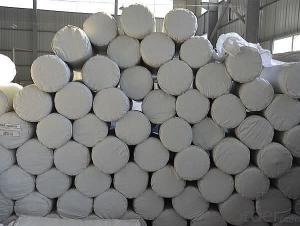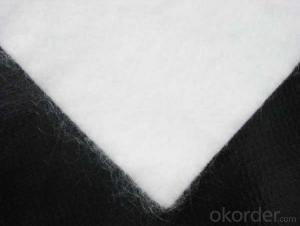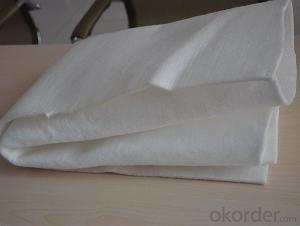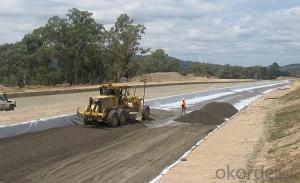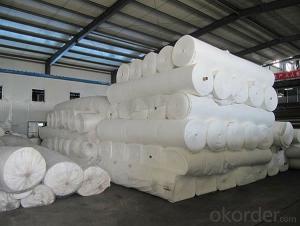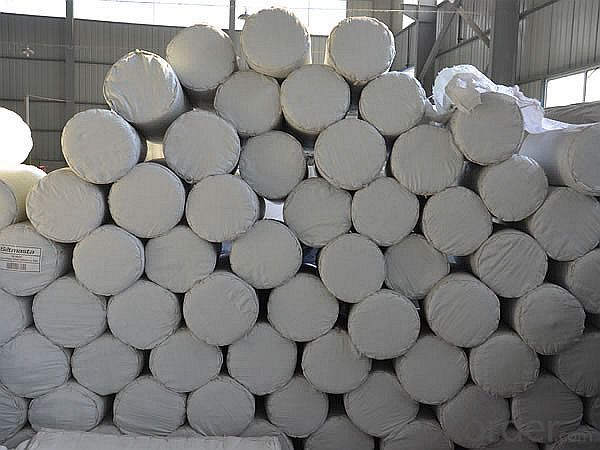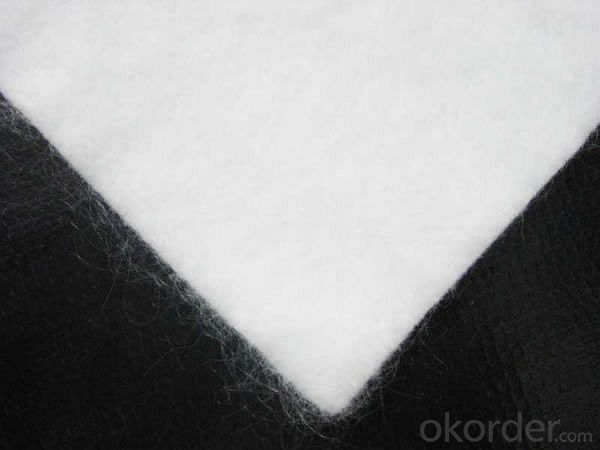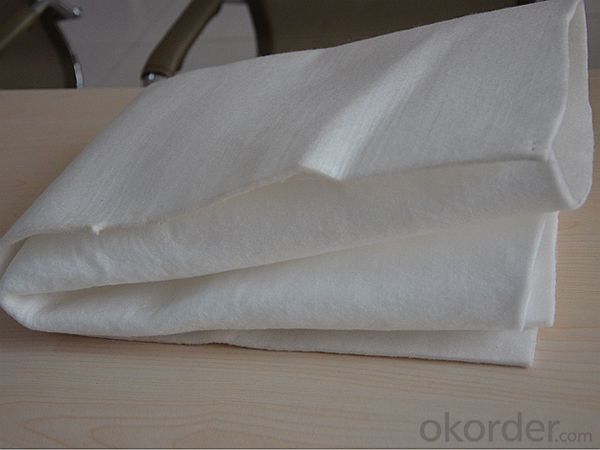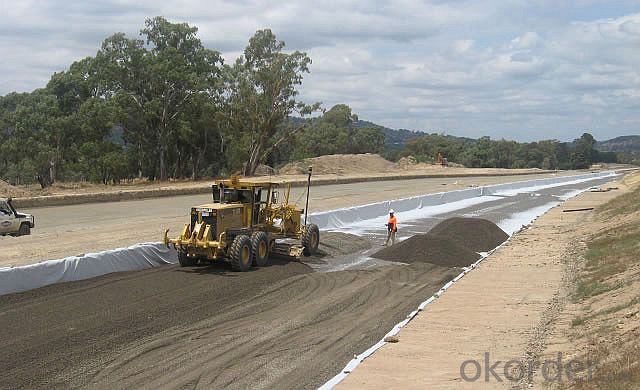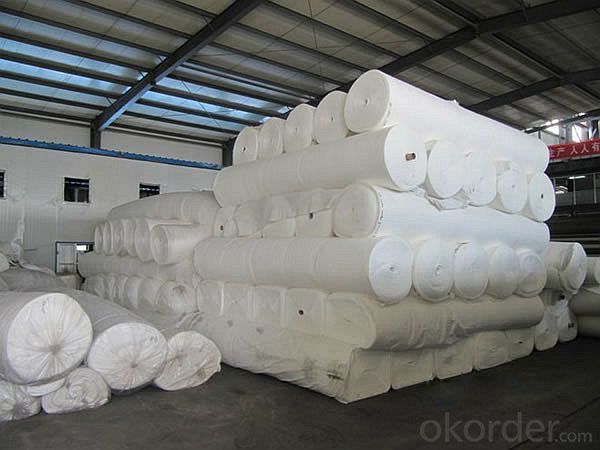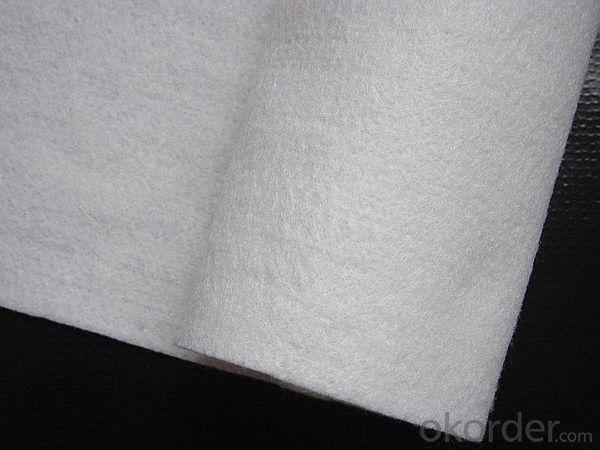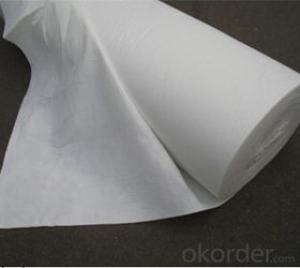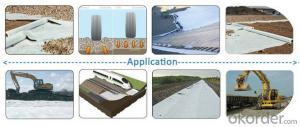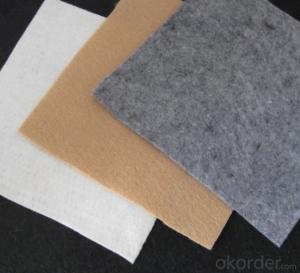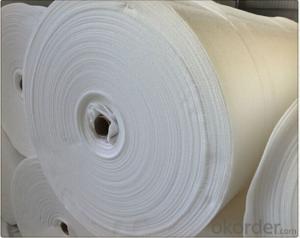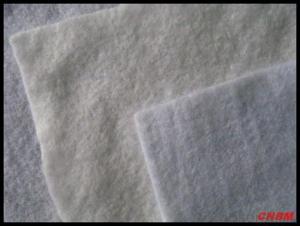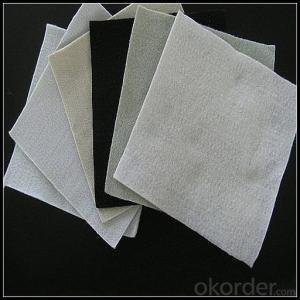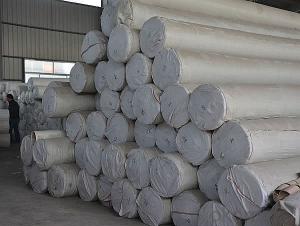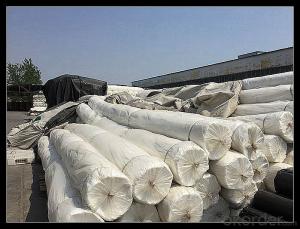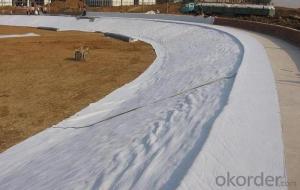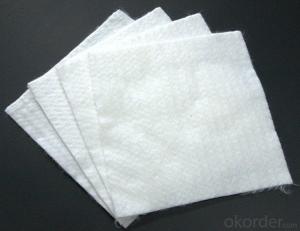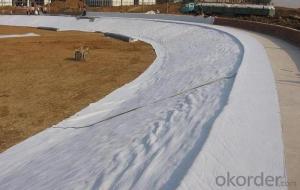Lowes Geotextile - Non-Woven High Stabilization Compounding Silk
- Loading Port:
- China main port
- Payment Terms:
- TT OR LC
- Min Order Qty:
- 1000 m²
- Supply Capability:
- 10000000 m²/month
OKorder Service Pledge
OKorder Financial Service
You Might Also Like
Specification
Geotextile Fabrics
CNBM landscape fabrics are versatile and can be used for soil separation, reinforcement,
stabilization filtration, and weed restriction. There are many geotextiles and sizes to
choose from for a wide range of applications.
Woven (Stabilization and Soil Separation Fabrics)
Polypropylene slit-film geotextiles utilized in applications such as separation of
aggregate base materials and native soils in roadway construction, stabilization over soft
soils and separation between dissimilar soils.
Non-woven (Filtration and Drainage Fabrics)
Needlepunched polypropylene fiber geotextiles utilized in site drainage, blanket drains
and pipe joint wrapping and erosion control under rip rap.
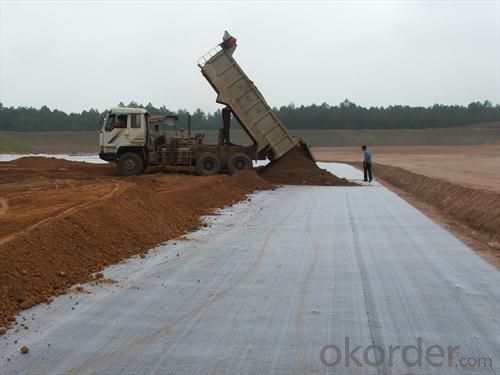
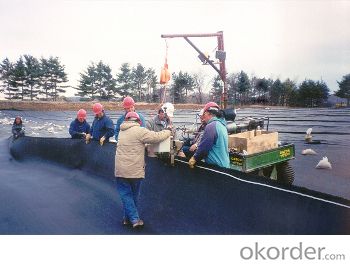
Our Service
Quality assurance
1.On a regular basis or as per your request,we entrust national testing agencies to conduct quality inspections
2. Strictly in accordance with the ISO9001-2008 international quality system standard,we monitor and manage the whole process throughout production,quality testing,and measurement to ensure product quality
3. For quality-related construction delay or substandard construction(except for damage or losses due to customer’s responsibility or irresistible natural disasters),we have refunding,replacement,and repair services.We will respond to customers’ feedbacks on quality issues within 24 hours.
After-sales service
1.In order to provide customers with comprehensive technical support,we will provide technical and other related information upon request in a timely manner.
2.In required,we will appoint specialized technicians to the construction site to give technical trainings to construction people,and offer technical guidance throughout the whole construction process.
3.For damage due to shipment and delivery,after we receive the complaint,we will check the issure through provided pictures and videos.If our responsibility is confirmed,we wil offer free replacement.
4.When the construction is completed,as your request,our technical staff may participate in the final acceptance.
FAQ:
Q: What kind of payments does jenor support?
A: T/T, L/C, Cash are accepted.
Q: Do you charge for the samples?
A: Accordeing to our company policy, the samples are free, we only charge the freight fee. And we will return the freight fee during the next order.
Q: Can you produce according to customers' design?
A: Sure, we are professional manufacturer, OEM and ODM are both welcome.
Q: Do you have other products?
A: Yes, please check the pictures:
Packaging & Shipping
Packing: PLASTIC FILM INSIDE, AND WOVEN BAG OUTSIDE
Shipping: About 15 days after receipt the deposit
geotextile fabric
permeability,filtration,easy for construction
ISO and CE certificate
Good quality and competitive price
- Q: Can geotextiles be used in road construction?
- Yes, geotextiles can be used in road construction. They are commonly used as a part of the road pavement system to enhance the performance and durability of the roads. Geotextiles provide reinforcement, separation, and filtration functions, helping to prevent the mixing of different soil layers, improving load distribution, and reducing the potential for pavement damage.
- Q: What is the coefficient of friction for nonwoven geotextiles? What is the coefficient of friction between rock and soil?
- My company specializes in the production of geotechnical materials, treat people with sincerity to ensure your satisfaction.
- Q: Can geotextiles be used in geosynthetic clay liner applications?
- Yes, geotextiles can be used in geosynthetic clay liner applications. Geotextiles are often used as a protective layer or separator over the geosynthetic clay liner to prevent clogging and enhance the overall performance of the liner system.
- Q: 200g / m2 geotextile how to enter the inspection test
- 200g / m2 geotextile how to enter the inspection test
- Q: Are geotextiles suitable for use in rain garden systems?
- Yes, geotextiles are suitable for use in rain garden systems. Geotextiles help to retain and filter water, prevent soil erosion, and provide stability to the rain garden system. They also allow water to infiltrate slowly, reducing runoff and promoting better water management in rain gardens.
- Q: What is the consequence of the geotextile of the ground floor
- What are the consequences of what can not be finalized, the first roof of the waterproof layer and waterproof protective layer is very important, this is the first barrier, imagine, now many of the green plants are large trees, grow 10 years or even 20 years After the roots will be very developed, think about how the pine trees on the tenacious know their strength, coupled with long-term erosion by the water, the concrete layer will gradually lose its ideal performance, barrier layer and drainage board will certainly be better To protect the role and drainage. Well, long-term perspective, then we must do a solid job every layer, only focus on economic interests and short-term effects, then, within a few years will not be any problem, this is the status of China's construction industry. But the debt owed sooner or later.
- Q: The technical parameters of woven geotextile
- Test items / specifications 0400 Remarks breaking strength (longitudinal) KN / m ≥ 17. Breaking strength (horizontal) KN / m ≥ no special requirements by the meridional 0.7 / 1 longitudinal and transverse elongation at break% ≤ 25 vertical and horizontal trapezoidal torn Strength, KN ≥ 0.180.200.270.340.410.480.600.72 vertical and horizontal CBR top breaking strength, KN ≥ 1.41.62.43.24.04.86.07.5 equivalent aperture O95 (O95) mm0.07-0.5 vertical permeability coefficient cm / sK × (10-1-10-4) K = 1.0-9.9
- Q: What are the factors to consider when selecting geotextiles for coastal protection projects?
- When selecting geotextiles for coastal protection projects, there are several factors to consider. Firstly, the type and quality of the geotextile material is crucial. It should be durable, resistant to UV radiation, and capable of withstanding the harsh coastal environment, including exposure to saltwater and strong waves. Secondly, the intended function of the geotextile should be taken into account. Different geotextiles offer varying levels of erosion control, filtration, and stabilization. Therefore, the specific needs of the coastal protection project, such as preventing beach erosion or stabilizing coastal structures, should be considered. Thirdly, the site conditions and project requirements play a significant role. Factors like wave energy, sediment characteristics, and slope stability need to be assessed to determine the appropriate geotextile specifications. Furthermore, the installation and maintenance requirements should be evaluated. Geotextiles that are easy to install and require minimal maintenance are often preferred, as they can save time and costs during the project's lifespan. Lastly, the cost-effectiveness and longevity of the geotextile should be taken into consideration. It is essential to balance the initial cost of the geotextile with its expected lifespan and performance to ensure a sustainable and economical solution for coastal protection.
- Q: How do geotextiles help in the prevention of clogging in drainage systems?
- Geotextiles help prevent clogging in drainage systems by acting as a filter. They allow water to pass through while preventing the passage of fine particles that could clog the system. The geotextile acts as a barrier, retaining the soil particles and allowing the water to flow freely, thereby maintaining the effectiveness and longevity of the drainage system.
- Q: Geotextile strength index with interpolation method how to calculate? Then geotextile variation, I do not quite understand, pro, if you know whether to tell me Oh! Very anxious
- Geotextile strong indicators of the interpolation method: For example: geotextile 150 grams of breaking strength is 4.5KN, geotextile 100 grams of breaking strength is 2.5KN, then the geotextile 130 grams of broken strength is how much? The calculation method is: 4.5KN-2.5KN = 2KN (that is, 50 grams of geotextile strength) 2KN by 50 grams multiplied by 30 grams is equal to 1.2KN then geotextile 130 grams of breaking strength is 3.7KN.
Send your message to us
Lowes Geotextile - Non-Woven High Stabilization Compounding Silk
- Loading Port:
- China main port
- Payment Terms:
- TT OR LC
- Min Order Qty:
- 1000 m²
- Supply Capability:
- 10000000 m²/month
OKorder Service Pledge
OKorder Financial Service
Similar products
Hot products
Hot Searches
Related keywords
